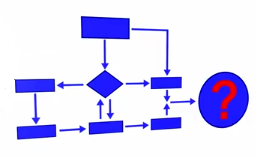 A very often asked question is, what's the difference between PDM and PLM? It is both a long story and a short story all at once. We'll take a look at the key attributes of each system and then look at where the difference between them.
A very often asked question is, what's the difference between PDM and PLM? It is both a long story and a short story all at once. We'll take a look at the key attributes of each system and then look at where the difference between them.
To start, what is PDM?
PDM stands for Product Data Management. It was spun out of a time and a place when CAD/CAM was new and drawings needed to be put somewhere. Unlike the old days, when people would make a drawing and put it on Mylar paper and stick it in a vault somewhere, people were looking for an answer to how do you now store all that CAD/CAM information and other such pieces of information related to the product design. So ultimately something called Product Data Management was invented. This is back in the early '80s, mid '80s.
What about PLM?
So, now we come to PLM, which stands for Product Lifecycle Management. And this really says, I'm going beyond just the basics of dealing with a CAD/CAM drawing, dealing with some spec, dealing with an engineering change. Instead, it goes on to say, let me look at the entire product lifecycle of a product. In fact, let me encapsulate the new product introduction process. And by that it means to come up with perhaps a stage-gate model or the like, where you have a concept phase, a prototype phase and a manufacturing phase, those sorts of things. And you try to then institutionalise the various aspects of how one would build their product.
How about when you move to more than one product?
So that's with a single product. Now, you can imagine a company has more than one product, as a rule. So now you have a portfolio of products going through this new product introduction process. This is called product portfolio management. In this are all things associated to the product, including:
- Do I keep this product line alive?
- Should I shift resources from that product line to this product line?
So that's called product portfolio management. And as we know, no product lives statically or, at least, almost no product lives statically. For the majority of discreet manufacturing, there's a certain amount of change that goes on from introduction to introduction, year to year. Even in the lifecycle of a given product changes go on. This is called change or configuration management. All of the information related to this, such as, new product introduction, requirements, integration to downstream ERP systems, all get now placed into Product Lifecycle Management, rather than just the Product Data Management.
Find out more about selecting a PLM system and download our free guide: 10 steps to selecting PLM
